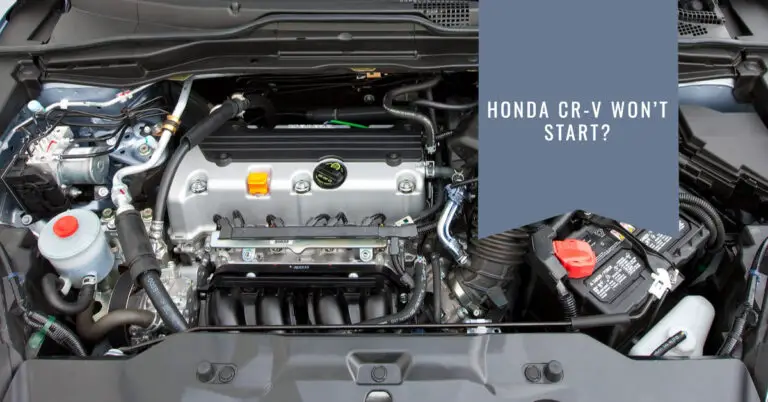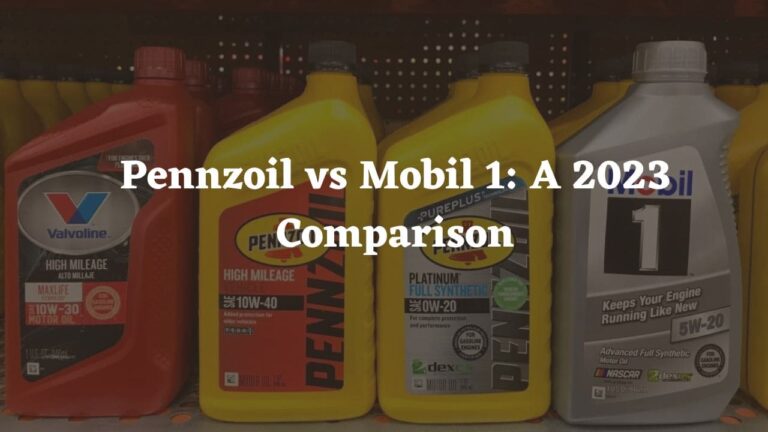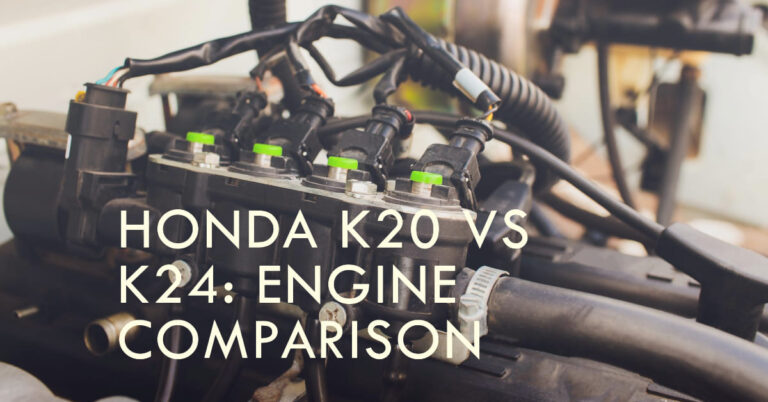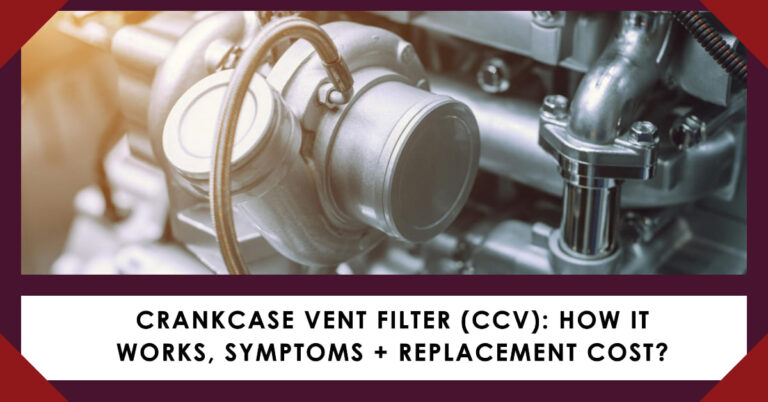5 Signs of Blown Engine: Prevention and Causes Explained
It was a sunny Saturday afternoon when Dan decided to take his classic 1965 Mustang for a leisurely cruise around town. As he drove down the road, Dan suddenly heard a loud clanging sound come from under the hood. The engine started smoking and spewing steam before sputtering to a stop right in the middle of an intersection! Dan’s heart sank realizing his engine was likely blown. Has your engine ever suddenly broken down, leaving you stranded? How do you know if your engine is officially blown and what should you do about it?
A blown or seized engine typically exhibits distinct symptoms like smoke, overheating, and strange noises. While a blown engine often requires replacement, prompt diagnosis and action can sometimes allow for repairs. This article will cover the five most common signs of a blown engine, steps to take when engine failure occurs, whether to repair or replace a damaged engine, and typical costs.
Table of Contents
What Does a Blown Engine Mean?
Before diving into the warning signs, let’s briefly explain what a blown engine actually means. A blown engine refers to internal damage that occurs when an engine overheats or loses oil pressure, resulting in component failure. This damage can range from small cracks in engine blocks to completely seized motors.
Some of the most common causes leading to a blown engine include:
- Overheating – Coolant leaks, faulty water pump, clogged radiator
- Lack of Oil – Oil leaks, sludge buildup, not changing oil
- Detonation – Abnormal combustion like pinging or knocking
- Foreign Object Damage – Debris sucked into the engine
- Mechanical Failure – Broken engine parts like pistons or rods
Other terms you may hear mechanics use for a blown engine include seized, cracked block, thrown rod, or rod knock. But they all mean the same thing – serious internal engine damage requires major repairs or a complete replacement.
Now let’s look at the typical symptoms associated with a blown engine so you can identify them.
5 Common Signs Your Engine is Blown
Watching for the warning signs of a blown engine can help prevent further damage and avoid getting stranded. Here are five of the most common indications that your engine may be blown:
1. Smoke Coming from the Engine
Seeing smoke come out from under the hood is one of the most telling visual clues that your engine is in trouble. The color and cause of the smoke can indicate different issues:
- White smoke – Usually means an internal coolant leak allowing antifreeze to mix into the combustion chambers. This unburned vapor exiting the tailpipe signals blown head gaskets, cracked heads, or damaged cylinder blocks.
- Blue smoke – Indicates oil getting into the engine cylinders and burning. Blown piston rings or worn valve seals can allow excess oil to slip by into the combustion chamber.
- Black smoke – Means the engine is burning too much fuel. This is commonly caused by a clogged air filter, faulty fuel injectors, or leaky fuel system components.
Smoke emanating from your hood or tailpipe, especially in conjunction with other symptoms, is a definite red flag not to ignore.
2. Overheating Engine
If your temperature gauge is in the red or the “check engine” light comes on, an overheating engine is another telltale sign of potentially catastrophic internal damage. Common causes of engine overheating include:
- Coolant leaks
- Faulty water pump or thermostat
- Damaged radiator, hoses, or cap
- Low coolant and air pockets
- Sludge obstructing coolant circulation
- Detonation and excessive cylinder pressure
Driving with an overheated engine can quickly lead to a blown head gasket, warped cylinders, or cracks in the cylinder walls. Pull over and shut off the engine right away if you notice overheating before it has a chance to destroy your engine.
3. Strange Noises
Unusual sounds coming from under the hood like knocking, rattling, squealing, or other clanking noises point to trouble. Some specific noises indicating your engine is blown:
- Rod knock – A loud, rhythmic rattling noise from low oil pressure or coolant mixing with oil. Damaged connecting rod bearings make this sound.
- Piston slap – A knocking or ticking noise from excessive piston clearance. This often progressively gets worse as the engine warms up.
- Valve train noise – Intermittent clicking or tapping from damaged camshafts, lifters, rocker arms, or timing issues.
These types of strange new noises suggest serious internal damage, especially if accompanied by other symptoms like smoke and overheating. Don’t ignore them.
4. Loss of Power
A lack of engine power, misfires, trouble accelerating, and difficulty starting can all be tied to a blown engine. Issues like:
- Compression loss in cylinders
- Failed pistons, rings, or valves
- Engine timing issues
- Detonation and pre-ignition
All result in less combustion power being produced and transferred to the drivetrain. The engine may still run, but exhibit noticeable power loss.
5. Dashboard Warning Lights
Dashboard indicators like the “check engine” light, low oil pressure light, and high temperature warning can indicate a blown engine. Scan for:
- The check engine light – Signals engine misfires, ignition problems, or sensor faults. Having this light come on with other symptoms indicates big trouble.
- High temperature gauge – Don’t ignore it if the gauge creeps up near the red zone. Pull over and shut off the engine immediately.
- Low oil pressure light – Signals possible sludge buildup or leaks lowering oil levels. This can quickly lead to engine seizure when oil can’t properly lubricate everything moving fast inside the motor.
So in summary, smoke, overheating, strange noises, loss of power, and warning lights on the dash are the top five signs of a potentially blown engine.
What To Do If You Have a Blown Engine
Let’s say you’re driving and notice the temperature gauge has crept up to hot, along with some steam starting to rise from under the hood. Here are the smart steps to take:
- Safely pull off the road as soon as possible. Get completely out of traffic and away from any hazards.
- Shut off the engine immediately to prevent further overheating damage.
- Pop the hood but DO NOT open the radiator cap. The cooling system is under pressure and hot coolant can cause severe burns if it spews out.
- Let the engine fully cool down before inspecting anything. DO NOT attempt to restart it. The engine is already damaged from overheating and restarting can make it worse.
- Call for a tow truck to have your vehicle taken to a professional mechanic. Do not attempt to re-start or drive the vehicle if you suspect a blown engine.
- Have a mechanic thoroughly diagnose the issues. They may need to perform a cylinder leak down or compression test. This will check for leaks, bad valves, rings, etc.
Once diagnosed, now comes the big decision…should you repair or replace the blown engine?
Repair or Replace a Blown Engine?
Once a certified mechanic has confirmed you have a blown engine, deciding whether to repair or replace depends on:
- Extent of damage – Repairs are only possible if damage is limited. Replacement is required for seized motors or major internal component failure.
- Engine type – More expensive, high performance engines are usually worth repairing. Cheaper base model engines are mostly swapped out.
- Cost comparison – Compare repair estimates to replacement costs to determine the better value.
- Labor intensity – Rebuilding an engine takes a lot of hours of labor which adds to costs. Engine swaps are faster.
- Vehicle value – Repairing a blown engine on an older high-mileage vehicle may not be worth it. Replacement engines often cost almost as much as the car itself.
Minor issues like a blown head gasket, leaking seals, or cracked block may be repairable if the bottom end is intact. Parts can be machined or replaced. But if multiple connecting rods are thrown or the crankshaft is damaged, the block and internals require a complete rebuild or replacement.
In general, if repairs exceed more than 50% of the cost of swapping in a remanufactured or used replacement engine, replacement becomes the better option. The labor hours also make replacement a faster, easier, and often cheaper fix. Just ensure the replacement fits and matches your vehicle make and model.
Typical Blown Engine Repair Costs
How much can you expect to pay for blown engine repairs or replacement? Some average estimates:
- Blown head gasket – $1,200-$1,800+ for parts and labor
- Cracked engine block – $2,000-$4,500+ depending on damage extent
- Rod knock repair – $2,500-$5,000+ parts and labor
- Engine rebuild – $4,000-$8,000+ for full internal rebuild
- Engine replacement – $5,000-$9,000+ depending on engine type
DIY repairs can cut costs, but require advanced expertise. Most blown engines are best left to professional mechanics who have the skills, tools, and resources to properly diagnose and fix major engine damage.
Blown Engine FAQs
Here are answers to some frequently asked questions about dealing with blown engines:
How much does it cost to replace a blown engine?
Complete engine replacement typically costs $5,000 to $9,000+ depending on engine type. Labor, parts, removal and installation all add to the total costs which can approach or exceed $10,000.
Is it worth fixing a blown engine?
Minor repairable damage like a blown head gasket may be worth fixing. But major damage requiring a rebuild or replacement means it’s often not worth saving the original engine. Install a remanufactured or used replacement engine instead.
Can you drive with a blown engine?
No, it is not safe to drive with a blown engine. The vehicle should be towed to avoid causing further damage or a breakdown away from help. Loss of power or stalling out can lead to dangerous situations if driven.
Key Takeaways: Signs of Blown Engine
Watching and listening for symptoms like smoke, overheating, noises, warning lights, and loss of power can alert you to engine troubles before catastrophic failure occurs. But once major internal damage is present, the safest bet is having your vehicle towed and the engine professionally inspected or replaced. With prompt action, you can avoid being left stranded and minimize repair costs.
Knowing these common signs of a blown engine along with what steps to take can give you confidence in identifying problems and addressing them quickly. Stay alert behind the wheel and don’t ignore any emerging issues. Taking action early greatly improves your chances of saving the engine or avoiding a dangerous roadside breakdown.
So be vigilant when driving and have any engine problems checked by a trusted mechanic. Major engine repairs or replacements can be costly, but are often necessary when severe damage occurs. However, with proper preventative maintenance and attention to warning signs, you can increase your engine’s longevity and avoid unexpected breakdowns.







